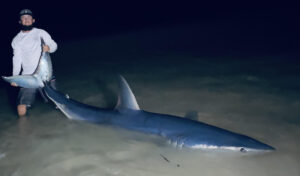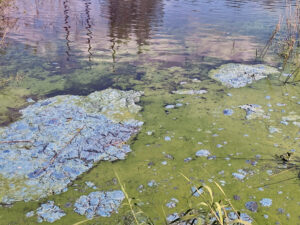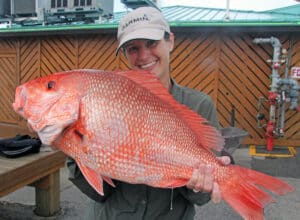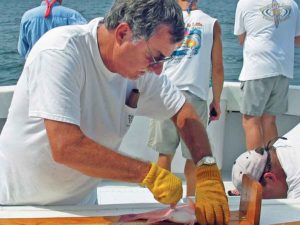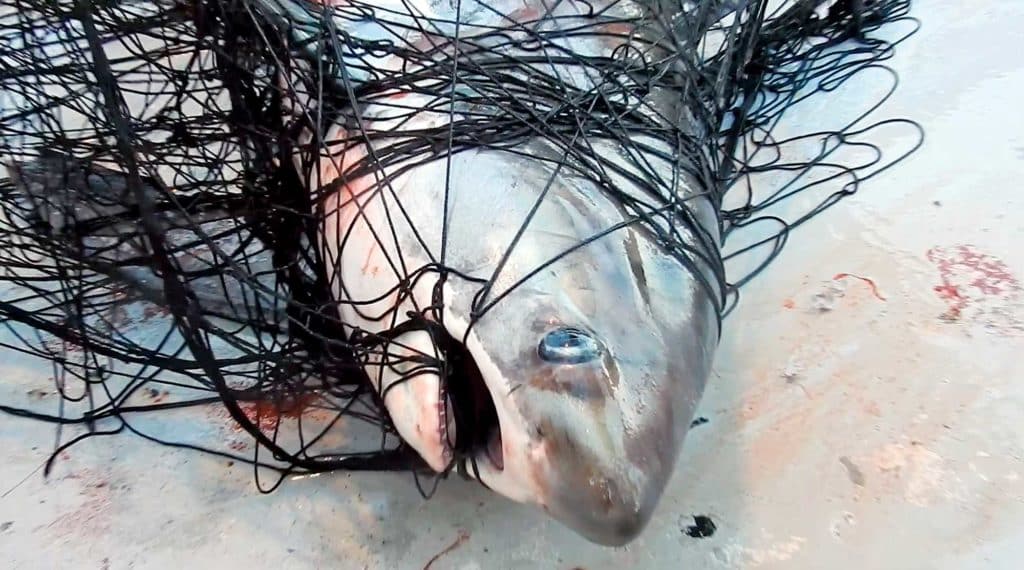
Among states that most of us associate with being “green” and environmentally aware, California would come to mind as at or near the top of the list. So how then to explain that this icon of progressive thinking, on our Pacific Coast, would be the only place in the United States and Hawaii — and indeed, most of the world — that still allows one of the most destructive forms of high‑seas fishing? How is it that in a state busy worrying about things such as taking split shot out of the tackle boxes of anglers, drift gill-netters continue to legally put out what have been widely termed their “walls of death”? Mile-long drift gill nets ensnare not only the intended swordfish, but pretty much any large marine animals that swim into them as well. And many do: The fishery throws away more than 50 percent of what it catches. Some of those “discards” — a bureaucratic euphemism for dead sharks, billfish, dolphins and porpoises, sea turtles, and more — appeared in recent months in videos that shocked many, showing an unfortunate dead mola (ocean sunfish) as victim of a drift net, along with other dead animals, including dolphins and sharks.
Among those shocked were three U.S. senators. Together, senators Diane Feinstein (D-Calif.), Shelley Moore Capito (R-W.Va.) and Kamala Harris (D-Calif.) recently introduced Senate Bill 2773 — the Driftnet Modernization and Bycatch Reduction Act, intended to phase out the use of drift gill nets off the last state still allowing it by 2020.
These senators received accolades from a coalition of groups that had been working to end drift gill-netting — the American Sportfishing Association, Coastal Conservation Association of California, the International Game Fish Association, and Wild Oceans. I would say those accolades are well-deserved.
While this might seem a “California problem,” in fact, the drift-net fishery is co-managed by the state (the California Fish and Game Commission) and the federal government (the Pacific Fishery Management Council and NOAA Fisheries). What, for so many years, made the outrageous amount of drift-net bycatch waste acceptable here but nowhere else, I can’t imagine. Perhaps the best explanation is the one that Mike Leonard, conservation director for the ASA, described to me as “bureaucratic inertia.”
Read Next: Restrictions on Driftnets Protect Whales & Turtles, but Leave Finfish Vulnerable
Recognizing that the best hope to end the drift-net travesty lay in a legislative solution, the senators crafted the Driftnet Modernization and Bycatch Reduction Act.
For now, however, we wait and watch to see how this important legislation progresses in the Senate. Introducing the bill is only the first step. If the bill makes it out of committee, it will need support from the recreational-fishing community to help ensure passage in the full Senate.
Ultimately, SB2773 is our best hope to finally see an end to these walls of death constantly drifting off California.
Doug Olander is editor-in-chief of Sport Fishing magazine.

